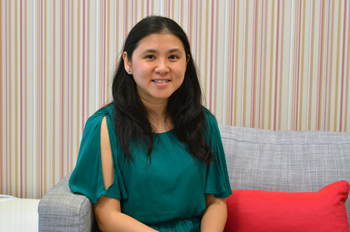Why Singapore’s English Teachers Should Embrace Singlish, Not Fight It
Is it time for Singaporean educators to embrace Singlish as a legitimate learning tool? What the Research […]
Read More
Students play a huge role in their own learning process but they often have few opportunities to assess themselves in the classroom – something NIE Research Scientist Dr Wong Hwei Ming believes can promote learner responsibility and independence. Speaking at a workshop during the 3rd Annual Assessment Colloquium 2016, she addressed common misconceptions surrounding student self-assessment and provided suggestions on how teachers can engage students in self-assessment in the classroom.
When participants of a workshop on student self-assessment were asked “What is self-assessment?” their replies fell mostly along the lines of “students grade their own work”.
But is it that simple? Hwei Ming, who also lectures at NIE, emphasizes that for self-assessment to be effective, students first need to be aware of their actions.

Dr Wong Hwei Ming believes that students can be empowered to be assessors of their own work if provided with the appropriate structure and guidance from their teachers.
Although some teachers may not take student self-assessment seriously because they feel that “students don’t know what they are doing”, Hwei Ming stresses that students are actually a source of information about their own learning.
It is a common misconception that “students are not teachers, and hence they are not able to assess themselves”. Hwei Ming believes however that students can be empowered to take ownership of their own learning, provided they are given the appropriate structure and guidance from their teachers.
“Student self-assessment is a process where students reflect on their performances, thinking and learning,” explains Hwei Ming.
Through self-assessment, students understand themselves better as learners. They become more aware of what works and does not work for them in their learning process, and the conditions under which learning happens.
In class, self-assessment often takes the form of critical examination of their own work with reference to performance indicators set by teachers. It is also through this practice of self-assessment that students understand making mistakes and acknowledging them are essential to their learning process.
“Student self-assessment is a process where students reflect on their performances, thinking and learning.”
– Hwei Ming, Office of Education Research
“We should encourage failure as part of the learning process,” explains Hwei Ming. “It is through failure that students and teachers can learn better.”
To promote a culture of learning through failure, teachers first need to create a safe environment for students to experience failure without being judged.
For example, when the teacher asks the class a question and the answer that comes from a student is incorrect or incomplete, instead of directly pointing out that the student is wrong, the teacher can encourage other students to build on the first answer. “We should avoid burdening the students by creating classroom anxiety,” says Hwei Ming.
Giving students the opportunity to share the cognitive load of answering creates a collective learning opportunity for the entire class. Furthermore, teachers can gain insight into how students think and be able to address their difficulties instantly.
At the crux of self-assessment is the realization that students are capable of taking ownership of their learning, and that as educators, we need to help put this ownership back into their hands.